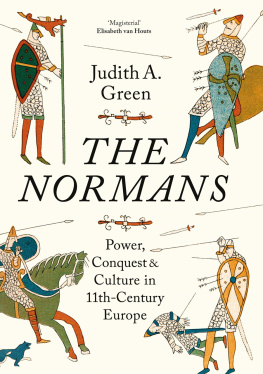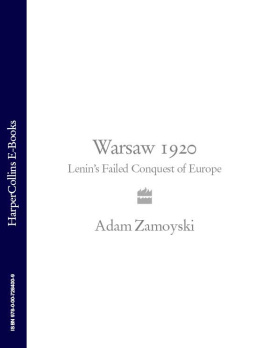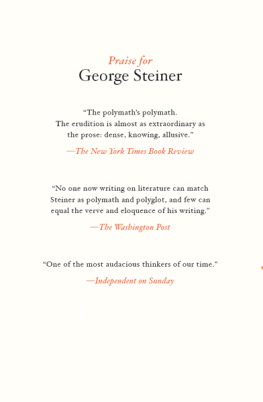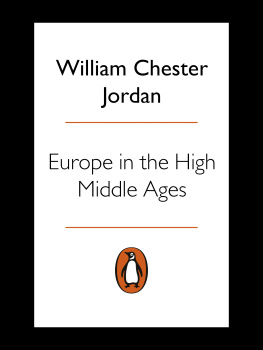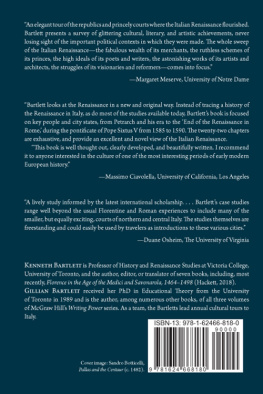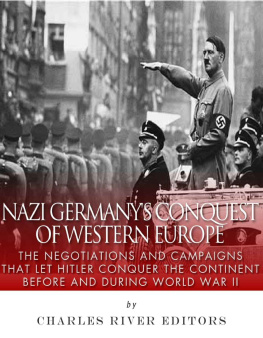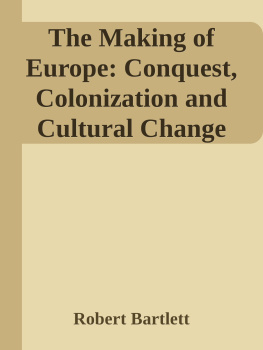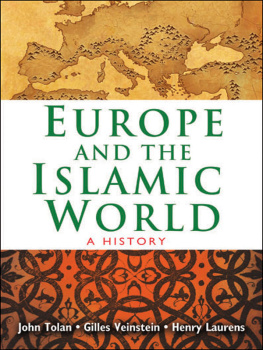PENGUIN BOOKS
THE MAKING OF EUROPE
Robert Bartlett is Professor of Medieval History at the University of St Andrews. Until 1992 he was Professor of Medieval History at the University of Chicago and earlier he taught at the University of Edinburgh. He received his university education at Cambridge, Oxford and Princeton and has held research fellowships at the University of Michigan, the Institute for Advanced Study and the Shelby Cullom Davis Center at Princeton, and Gttingen University. Previous publications include Gerald of Wales, 11461223; Trial by Fire and Water: The Medieval Judicial Ordeal; and England under the Norman and Angevin Kings 10751225. Professor Bartlett is married with two children.
The Making of Europe was awarded the Wolfson History Prize for 1993.
ROBERT BARTLETT

THE MAKING OF EUROPE
CONQUEST, COLONIZATION AND
CULTURAL CHANGE
9501350

PENGUIN BOOKS
PENGUIN BOOKS
Published by the Penguin Group
Penguin Books Ltd, 80 Strand, London WC2R 0RL, England
Penguin Putnam Inc., 375 Hudson Street, New York, New York 10014, USA
Penguin Books Australia Ltd, 250 Camberwell Road, Camberwell, Victoria 3124, Australia
Penguin Books Canada Ltd, 10 Alcorn Avenue, Toronto, Ontario, Canada M4V 3B2
Penguin Books India (P) Ltd, 11 Community Centre, Panchsheel Park, New Delhi 110 017, India
Penguin Books (NZ) Ltd, Cnr Rosedale and Airborne Roads, Albany, Auckland, New Zealand
Penguin Books (South Africa) (Pty) Ltd, 24 Sturdee Avenue, Rosebank 2196, South Africa
Penguin Books Ltd, Registered Offices: 80 Strand, London WC2R 0RL, England
www.penguin.com
First published by Allen Lane 1993
Published in Penguin Books 1994
Copyright Robert Bartlett, 1993
All rights reserved
The moral right of the author has been asserted
Except in the United States of America, this book is sold subject to the condition that it shall not, by way of trade or otherwise, be lent, re-sold, hired out, or otherwise circulated without the publishers prior consent in any form of binding or cover other than that in which it is published and without a similar condition including this condition being imposed on the subsequent purchaser
ISBN: 978-0-14-192704-6
For Penelope
Historia est rerum gestarum narratio.
(Hugh of St Victor, De sacramentis, I. prol. 5)
Contents

Maps, Figures and Tables

Maps
Figures
Tables
Plates

1. Document of William of Sabina establishing bishoprics in Prussia.
Geheimes Staatsarchiv Preussischer Kulturbesitz, Berlin, Perg. Urk., Knigsberg Urk. XL VIII. I. By permission of the Geheimes Staatsarchiv.
2. Carrickfergus castle.
By permission of the Northern Ireland Tourist Board.
3. Albert the Bear as depicted on one of his coins.
By permission of the Mrkisches Museum, Berlin.
4. Heavy cavalryman of the thirteenth century.
Paris, Bibliothque nationale, MS lat. 10136 (Annales Genuenses), fol. 141. B permission of the Bibliothque nationale.
5. A trebuchet of the late twelfth century.
Paris, Bibliothque nationale, MS lat. 10136 (Annales Genuenses), fol. 107. By permission of the Bibliothque nationale.
6. Peasants enfranchised in return for clearing land.
The Heidelberg MS of the Sachsenspiegel (Cod. Pal. Germ. 164), fol. 26v (illustration to Landrecht 3. 79.1). By permission of the Universittsbibliothek, Heidelberg.
7. Cistercians clearing land.
Cambridge, University Library MS Mm 5 31 (Albert of Stades reworking of Alexander of Bremens Commentary on the Apocalypse), fol. 113. By permission of the Syndics of Cambridge University Library.
8.The Bremen cog.
By courtesy of the Deutsches Schiffahrtsmuseum, Bremerhaven.
9. Wends and Saxons could not judge or bear witness against each other.
The Heidelberg MS of the Sachsenspiegel (Cod. Pal. Germ. 164), fol. 24r (illustration to Landrecht 3. 70. 12). By permission of the Universittsbibliothek, Heidelberg.
10. First Wendish coins.
By permission of the Staatliche Museen zu Berlin (Mnzkabinett).
Acknowledgements

The research on which this book is based has been supported by the University of Michigan Society of Fellows, the University of Edinburgh, the Institute for Advanced Study, Princeton, the Shelby Cullom Davis Center of Princeton University, the University of Chicago, the Alexander von Humboldt Stiftung and the Seminar fr mittlere und neuere Geschichte of Gttingen University. The author is grateful to these institutions. Earlier versions of some chapters have been given as talks to university audiences and both the invitations to speak and the comments and criticisms received are much appreciated. Versions of have appeared in print as War and Lordship: The Military Component of Political Power, 9001300 (Fourth Annual Phi Alpha Theta Lecture on History, State University of New York at Albany, 1984) and as Technique militaire et pouvoir politique, 9001300, Annales: conomies socits civilisations 41 (1986), pp. 113559. Friedrich Lotter gave much help in Gttingen; Patrick J. Geary, William C. Jordan, William I. Miller were kind enough to read the text in typescript and make valuable comments and criticisms; Jon Lehrich provided efficient assistance in the final stages of preparation of the manuscript. The book would not exist without the support, encouragement and occasional stylistic veto of Nora Bartlett.
A Note on References

The source of all direct quotations and specific factual statements in the text is given in the Notes. Notes are keyed to significant phrases in the text. To identify a source the reader should thus turn to the appropriate page in the Notes, identifiable from a running heading Notes to pp., and locate the key phrase in italics. Some general bibliography has also been given.
Map 1. Europe and the surrounding lands in the High Middle Ages
Introduction

Europe is both a region and an idea. The societies and cultures that have existed in this western extremity of the Eurasian land-mass have always been highly diverse, and the case for grouping them together as European has varied from period to period. Since the later Middle Ages, however, there has been enough common ground among the different parts of western and central Europe to make it reasonable to see this region of the world as a whole. When compared with other culture areas of the globe, such as the Middle East, the Indian subcontinent or China, western and central Europe exhibited (and exhibits) distinctive characteristics. In particular, Latin Europe (that is, the part of Europe that was originally Roman Catholic rather than Greek Orthodox or non-Christian) formed a zone where strong shared features were as important as geographical or cultural contrasts.
Next page




